In the arid landscapes of Arizona, a region known for its diverse ecosystems and unique wildlife, one group of serpents commands attention – King Snakes. With their vibrant colors, distinctive patterns, and fascinating behaviors, king snakes in Arizona are a captivating subject for herpetology enthusiasts and nature lovers alike. Among the various species inhabiting this southwestern state, five types of king snakes stand out, each contributing its own unique characteristics to the intricate tapestry of Arizona’s biodiversity. From the mimicry strategies of the Arizona mountain king snake to the adaptive prowess of the California king snake, this exploration delves into the diverse world of king snakes that call Arizona home.
Join us on a journey to discover the intricacies of these remarkable reptiles and unravel the secrets that make them a vital part of Arizona’s natural heritage.
Different Types of King Snakes in Arizona
Arizona mountain king snake (Lampropeltis pyromelana)
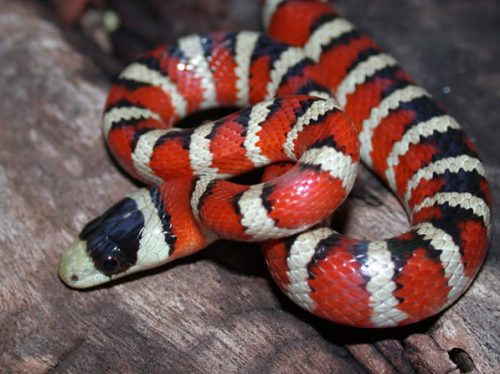
The Arizona mountain king snake, scientifically known as Lampropeltis pyromelana, is a species with unique colors and distinct characteristics. Commonly known as the Sonoran Mountain kingsnake, it stands out from other snakes thanks to its distinctly different appearance. Unlike the typical color patterns seen in other mountain kingsnakes, the Arizona variant has a coloration very similar to the venomous Western coral snake.
A quick glance at the Arizona mountain kingsnake could lead one to mistake it for its venomous doppelgänger, the Western coral snake. The colors are indeed similar, but upon closer inspection, as depicted in the accompanying image, differences are revealed. This mimicry enhances a snake’s chances of avoiding confrontation, as predators, aware of the potentially dangerous consequences, may choose to stay away.
Adapting to resemble a venomous snake, known as Batesian mimicry, is a survival strategy that has evolved over time. By taking on the appearance of a more dangerous species, the Arizona mountain kingsnake gains a degree of protection without possessing the actual ability to be poisonous.
One of the outstanding characteristics of the Arizona mountain kingsnake is its habitat preferences. These snakes are commonly found at elevations of 3,000 feet or more.
In terms of size, the Arizona mountain kingsnake is smaller, about 3 feet long. This relatively modest size contributes to its agility and maneuverability in mountainous habitats. Despite its lack of great stature, the snake’s deceptive coloration and mimicry tactics make up for its size, allowing it to move around with a degree of confidence.
Milk snake (Lampropeltis gentilis)
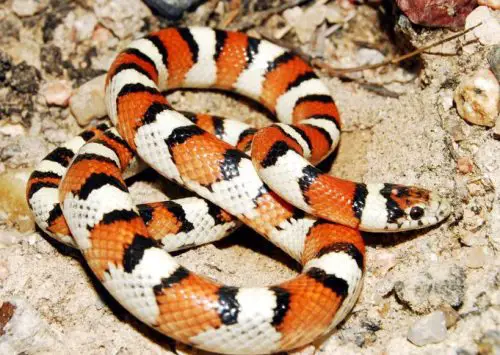
Milk Snakes, scientifically classified as Lampropeltis gentilis, add diversity to Arizona’s snake population. Belonging to the king snake family, it has something in common with other snakes in the area. A specific subspecies found in Arizona is believed to be Lampropeltis triangulum celaenops, commonly known as the New Mexico milk snake. However, the limited information available makes it difficult to confirm with certainty.
What makes the Milk Snake different is not only that it is classified as a king snake but also its special color. Notably, the color of the milk snake is said to mimic that of the venomous coral snake. This clever adaptation serves as an additional layer of defense, deterring potential predators by creating the illusion of danger.
Like other members of the king snake family, Milk Snakes exhibit opportunistic foraging behavior. Their diet is very diverse, including small reptiles, amphibians, rodents and even other snakes.
Desert king snake (Lampropeltis splendida)
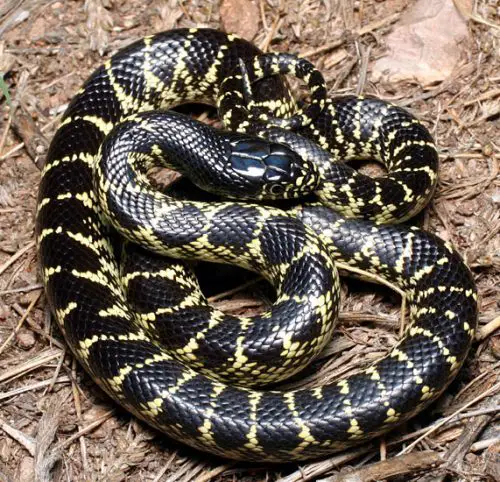
The desert king snake, scientifically known Lampropeltis splendida, is a species of snake found in large landscapes in Texas, Southeast Arizona, New Mexico, and possibly other neighboring states in the Western United States. Ky. This snake, classified as a subspecies of Lampropeltis getula, joins well-known members such as the California kingsnake and the Eastern kingsnake. However, recent scientific opinions suggest reclassifying the desert king snake as a separate species.
One of the outstanding characteristics of the desert king snake is its main black color decorated with brilliant yellow or white rings running along the length of its body. Their contrasting colors may play a role in temperature regulation, camouflage or even communication within the species.
What makes the desert king snake different from other king snakes is not only its unique color but also its ability to thrive in diverse habitats. Like other members of the king snake family, it exhibits adaptability to a variety of environments, including deserts, forests, and even wetlands.
In the complex network of desert ecosystems, desert king snakes play a role in maintaining ecological balance. An expert hunter, it can hunt a variety of small mammals, reptiles, and possibly other snakes.
California king snake (Lampropeltis getula californiae)
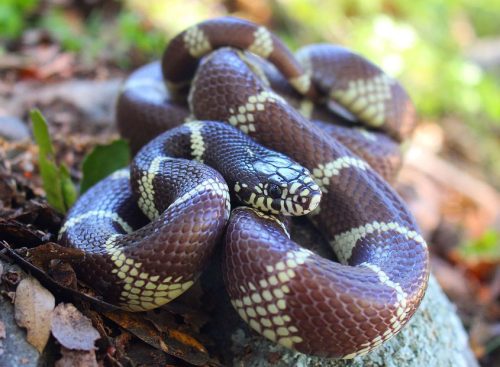
The California king snake, scientifically known as Lampropeltis getula californiae, is a prominent and popular member of the king snake family, Lampropeltis getula. Primarily found in far western states, including California, Nevada, and significant portions of Arizona, these snakes also expand their range into small areas of neighboring states such as Oregon to the north and Utah to the east.
Their distinctive colors, characterized by dark black, white and yellow bands, are easily recognizable features. California king snakes are also famous in the pet trade, for reptile enthusiasts.
Like other members of the king snake family, these snakes primarily feed on other snakes. In addition, both small mammals and reptiles are also their favorite food sources.
In terms of size and longevity, California king snakes are impressive. Able to reach lengths of up to 6 feet, these snakes can live up to 40 years in optimal conditions.
These adapted reptiles can be found in a variety of environments, including swamps, grasslands, deserts, forests, coastal areas, and more.
Mexican black king snake (Lampropeltis getula nigrita)
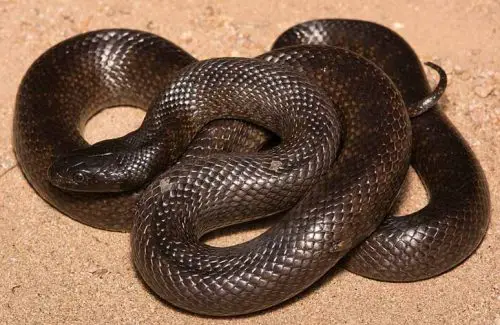
Mexican black king snake, scientifically classified as Lampropeltis getula nigrita in the world of king snakes. Unlike its name, the Mexican black king snake is not actually black but rather dark chocolate in color, a difference that is clearly noticeable, especially in sunlight.
Measuring 3-4 feet in length, the Mexican black king snake is a formidable reptile that contributes to the rich biodiversity of its habitat. Like their king snake relatives, their diet is diverse, including other snakes, reptiles, amphibians and small rodents.
Mexican black kingsnakes are primarily found in arid areas of Southeast Arizona and Mexico. To avoid the intense heat of the desert, these snakes have adapted to a nocturnal lifestyle, becoming more active and engaging in hunting activities during cooler night hours. This behavioral adaptation allows them to navigate their habitat more effectively while avoiding extreme temperatures during the day.
Recent studies have shown some evidence of interbreeding between this subspecies and other king snakes in the area. This hybridization phenomenon has potential implications for the genetic purity of the Mexican black kingsnake population.






